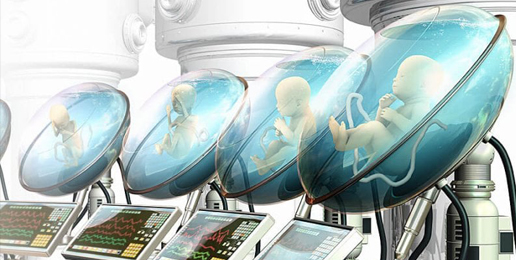
Americans are big on choice. We can choose restaurants, automobiles, our clothing, and even where to live. We can make good choices and bad choices. Our prisons are packed with those who’ve chosen the wrong path. Leaders in government often make us wonder, “What were they thinking?”
One of the saddest of choices millions of Americans have made is the decision to terminate a human life through abortion. In bizarre fashion, we even call this a “pro-choice” decision. Frightening.
The progressive “choice” crowd is always looking for an out—a way to justify the gruesomeness of killing a baby. But there is a secondary issue at play in the discussion: the term “unwanted pregnancy.” This raises the question, what if there were a way for a woman to end her pregnancy without ending the life of the child?
Sound a bit twisted? I recently came across an article describing the growing interest in ectogenesis. It was in an April 2023 edition of Wired magazine and titled, “Artificial Wombs will Change Abortion Rights Forever.” Now THAT caught my attention.
To get a better grasp on the subject, I contacted Dr. Matthew Eppinette, director of the Center for Bioethics and Human Dignity (CBHD) at Trinity International University in Deerfield, Illinois. He graciously provided helpful answers to several of my questions.
Before we discuss “artificial wombs,” you should know a bit about the CBHD’s work. Dr. Eppinette explains,
CBHD addresses a full range of bioethics issues—what to pursue and what not pursue when it comes to matters of life and health. Said simply, issues involved in Taking Life, Making Life, Sustaining Life, and Faking Life.
Obviously, “Making Life” issues include questions arising from reproductive technologies that allow for the creation of human life in laboratory settings. Thus this issue of artificial wombs (ectogenesis) is in their wheelhouse.
Dr. Eppinette explains,
Ectogenesis is the process of gestating a baby outside the body of a woman. To some degree, a version of ectogenesis occurs in IVF (In Vitro Fertilization), where eggs are fertilized in Petri dishes and allowed to develop briefly before being transferred into a woman’s uterus, placed into frozen storage, or discarded. In general, though, ectogenesis has to do with bringing a child toward full term in some technological device, outside of a womb.
Stages of this are currently being done. Most labs hold to the “14-day rule,” which forbids keeping human embryos alive in laboratories for more than 14 days.” Dr. Eppinette notes, however, there is increasing pressure “to extend the 14-day rule to 21 or even 28 or more days.”
Some of the experimenting has been done on lambs showing that a developing lamb fetus can be removed from the ewe’s uterus and gestated in an artificial womb until ready for birth. A gap exists between 14 or so days and several weeks in humans. So, to Dr. Eppinette’s knowledge, this line has not yet been crossed. Thus, no successful removal from an animal embryo from conception to birth has taken place entirely in an external womb. That, by defintion, is ectogenesis.
But wait…there must be some positive, real-life value to this “technology.” And there is. Dr. Eppinette offers this scenario. Consider a child being born very prematurely. (No child has survived in under 21 weeks of gestation). In this case, the baby spends weeks to months undergoing very intensive care. This child often faces significant developmental delays and even continued challenges throughout life.
However, a child reaching 18-24 weeks gestation could be transferred into an artificial womb. This would allow the baby to continue to develop for several more weeks before being fully delivered. Dr. Eppinette terms this “partial ectogenesis” and would be the most likely scenario in which this will be used.
But like any emerging technology, there are downsides. Among them, as Dr. Eppinette explains,
are all of the unknowns that go on between the body of the mother and the body of the child during pregnancy. We are only at the beginning of understanding the interplay between the two bodies and perhaps even more, between the mother’s body and the child’s mental and emotional development.
There’s more to be said on this. My next blog will include Dr. Eppinette’s answer on “will artificial wombs change abortion rights forever.”
For now, let’s ponder in amazement what King David wrote in Psalm 139, “I praise you, for I am fearfully and wonderfully made.” Verse 14 (ESV)
For more information, contact The Center for Bioethics & Human Dignity.





















